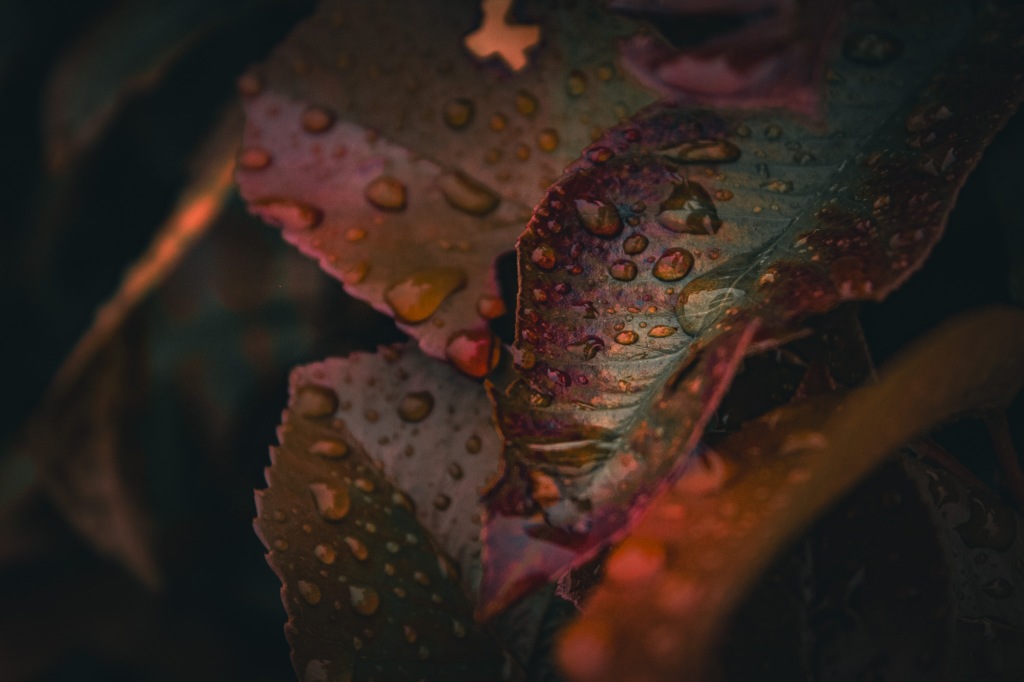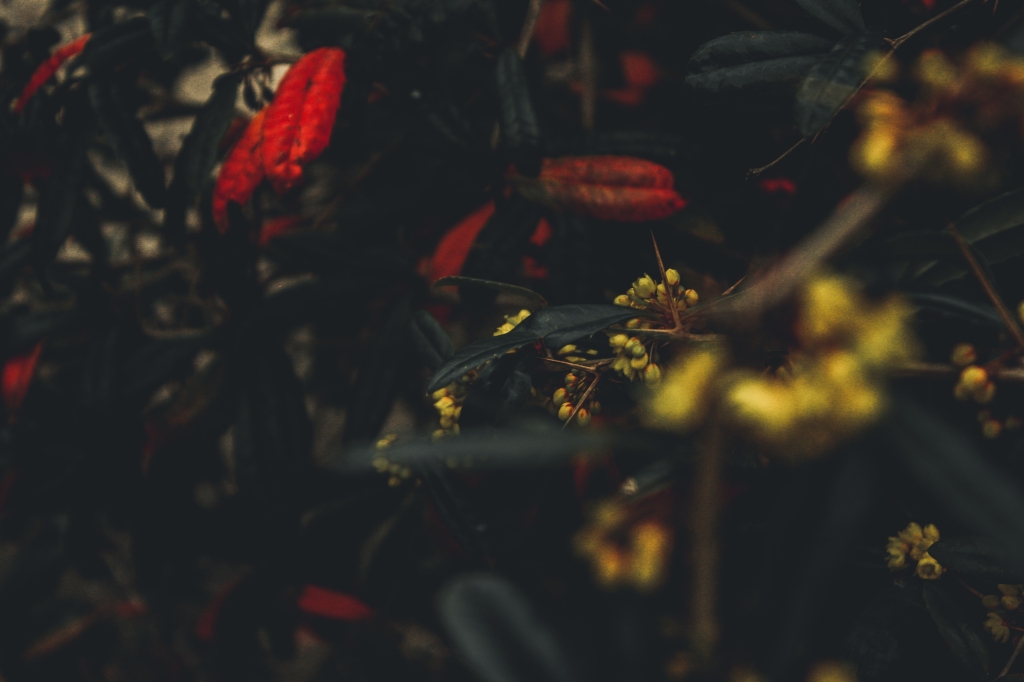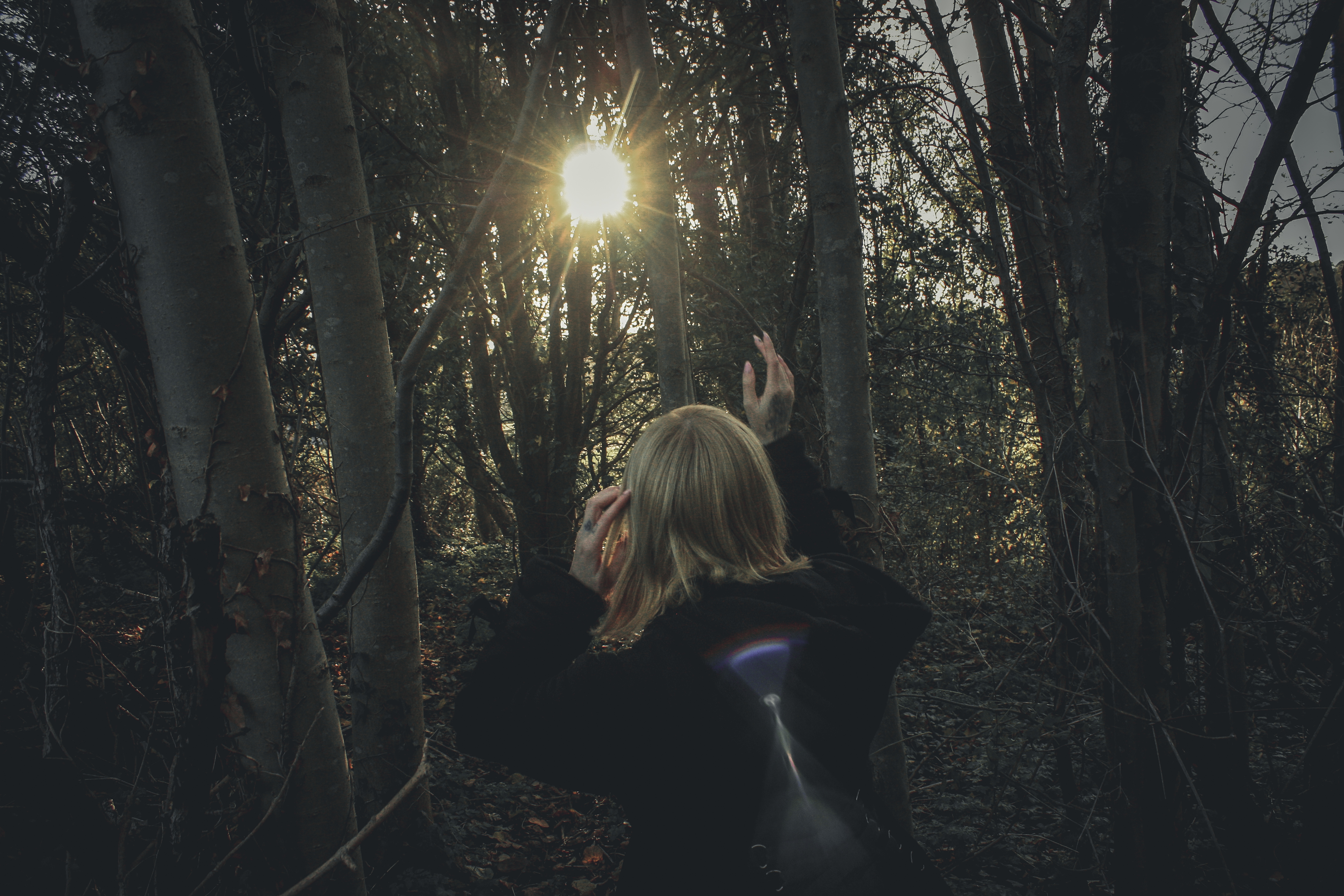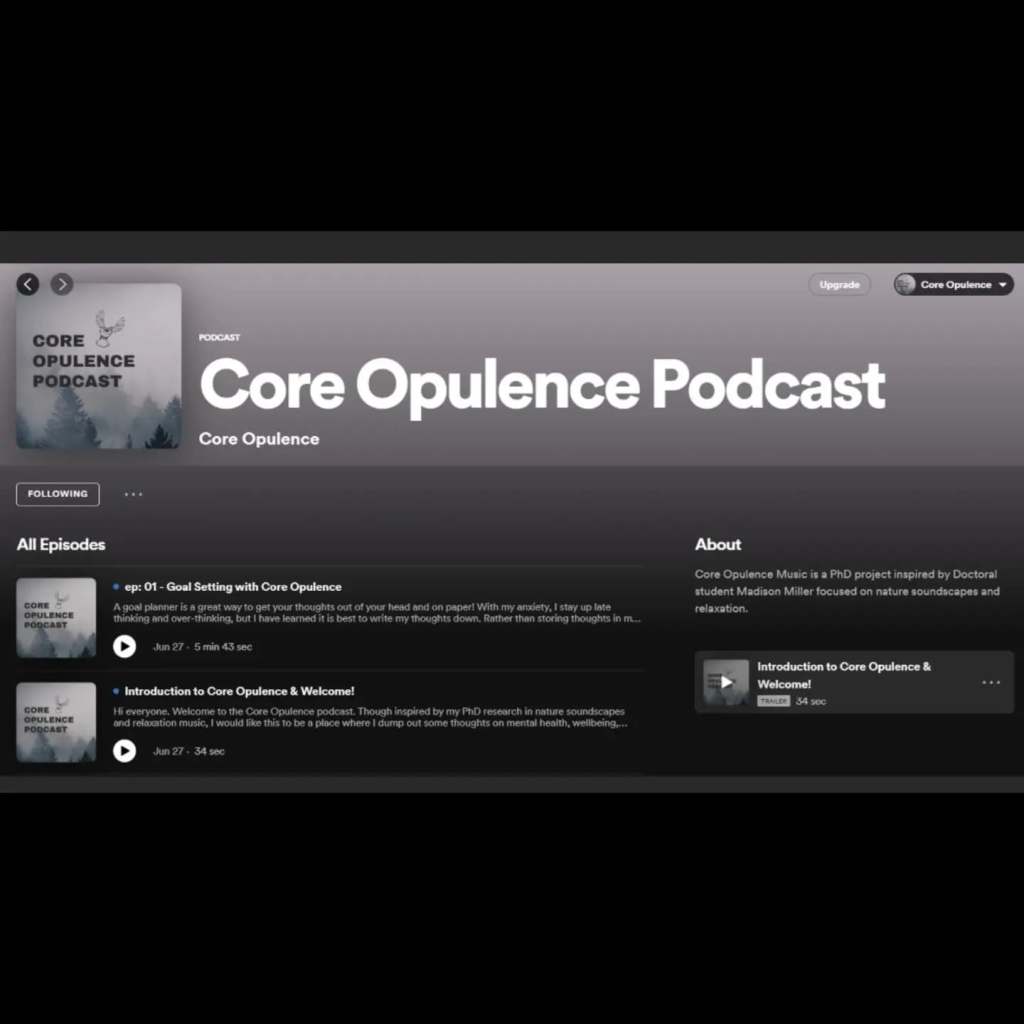(Submitted 18th May 2018, By Madison Miller – Bournemouth University, MA Media & Communications)
Introduction
Linguistic theories suggest humans have an innate need to communicate, which categorizes language as an instinctual characteristic (Pinker 2015). From this notion, some musicologists theorize music as a universal language, creating a synthesis between the human instinct to communicate and the meaning behind communication. This fusion proposes that music emulates language, specifically when comparing elements like: character symbols in language vs note symbols in music, musical sound systems vs language sound systems, rhythm in music vs rhythm in speech, melody in music vs melody in speech, etc (Patel 2010). This means that music has influence, much like language, that generates symbolic understanding and meaningful feeling. Likewise, theories suggest language can transcend the sciences, or the tangible, to embody language arts (poems, literature, etc.), or intangible. Music operates in this same manner, going from functional aspects to ambiguity, depending on the music genre, composure, etc (Pople 2006). In particular, binaural beats, which is music that aids in meditation, seems to embody the functional and aesthetic properties, depending on the composition. Firstly, understanding binaural beats and their effects on human consciousness must be explored in order to gain awareness of binaural beats and the relation to meditation. Next, the dichotomy of function vs aesthetic resting in binaural beats and their digitally created sound will highlight the functional elements of music. Afterwards, binaural beats and instrumentation will explore function vs aesthetic, concluding that binaural beats have an aesthetic appeal. Finally, this will bring the conclusion that binaural beats embody functional and aesthetic elements, but the amount of each will vary depending on the composition.
Understanding Binaural Beats and their Effects on Human Consciousness
Binaural beats, or two-tone beats, are an audio stimulus composing of two different tones. Discovered in 1893 by H.W. Dove, a German experimenter, binaural beats impact the listener through the variations between hertz (Leeds 2010). This is done through playing two tones, each at a different frequency. In order for the tones to have an impact on the listener, they are generated to play notes in the average human hearing range of 20-20,000Hz and are distributed to one tone per ear (Woodward 2016). While listening to binaural beats, it is often advised for listeners to wear headphones to obtain the best results. During the listening process the superior olivary nucleus, which rests in brain stem and functions by integrating auditory input, responds by linking the two tones together to create a perceived third beat (Porter 2008).
“The difference between the two frequencies must be small (below about 30 Hz) for the effect to occur; otherwise, the two tones will be heard separately and no beat will be perceived” (Lind-Kyle 2009, p. 254).
Here, the tones ebb and flow, which allows for the frequency waves to mesh in and out. Simultaneously, the third beat appears and disappears during the flow. This is known as a phase difference, which is brought on by the two carrier tones. The sensation of “hearing” the third beat, brought on by the frequency unification, generates a perceived universal hertz for the two tones. Additionally, the perception of isochoric tones, or tones that are rapidly turned on and off, takes place as the third beat replaces the sound of the two meshing frequencies (Woodward 2016).
A hertz is a unit of frequency that indicates the cycle per second of electromagnetic waves. Hertz are not only found in music, but in the human brain as well. The brain’s hertz, or brainwave patterns, change depending on the brain’s state of consciousness (Mattulich 2008). For instance, during the awake consciousness, gamma waves, which typically rest in 40Hz, provide high mental activity, problem solving, and fear awareness. Likewise, beta waves, which range from 16Hz to 39Hz, are during the awake state but offer active, busy, anxious thinking, paranoia, and cognition. Next, the alpha waves, which rest from 8Hz to 13Hz, is the pre-sleep phase. Here, the brain is relaxed, providing sleep drowsiness, REM sleep, and dreams. Theta waves, which range from 4Hz to 7Hz, are deep meditation, deep relaxation, and sleep waves. Similarly, delta waves, which are less than 4Hz, give deep, dreamless sleep and a loss of body awareness. Finally, the mu waves, which range from 7.5Hz to 12.5Hz provide sensorimotor awareness, which overlap with the alpha wave state (Woodward 2016).
However, the scale of hertz is vast and can adjust to go up or down. In the case of binaural beats, not all binaural beats rest in low hertz. Instead, the most common type of binaural beat is 432Hz (Van Heerden 2016). 432Hz in the binaural beat community is referred to as the Sacred Sound. The Sacred Sound, in theory, allows human consciousness to align with Earth’s frequencies, prompting the listener to feel balanced, centered, or grounded (O’Callaghan 2016). To explain, in 1952 German physicist Winfried Otto Schumann discovered the Schumann Resonance, which are global electromagnetic resonances that rest from Earth’s cavity to the ionsphere (Godbe 2018). This frequency is low, ranging from 7.88Hz to 8Hz. Using 8Hz as a starting point and moving up 5 octaves using Pythagorean mathematics, a system of calculation, where there is “a ‘mean’ between two terms in a given ratio” (Crock 1964, p. 325) providing harmony. The A note frequency of 8Hz in the Schumann Resonance becomes 432Hz (O’Callaghan 2016) using Pythagorean mathematics, letting the rest of the notes in the scale follow suit and make up the Solfeggio Scale. The Solfeggio Scale has ancient roots and can be found in modern healing practices involving binaural beats (Mattson 2016) on consciousness. This movement up the scale of perfect fifths, a 3:2 frequency ratio derived from a pair of pitches, was inspired by Pythagorean mathematics or Pythagorean tuning, where the Circle of Fifths, a relationship between 12 notes, depicts the Chromatic Scale. To help put this into perspective, the Chromatic Scale is heard when playing every note on the piano (Barbour 1933). These notes remain pleasant on the ear because the frequencies are distant enough to create harmony when played in a piece of music. Knowing this process of the 3:2 ratio, Pythagorean mathematics shows that the Schumann Resonance can go from 8Hz to 432Hz. At the same time, 8hz embodies the theta/ alpha range which is carried into the 432Hz A note. In music terms, this process is called Pythagorean turning, where 432Hz remains as an A octave through the base 8Hz.
Despite Pythagorean mathematics and the sacred notion of 432Hz, the Western standard of music, initiated by the International Organization for Standards in 1955, has A tuned to 440Hz. This standard was established as a way to bring consistency to orchestral music performances in different regions (Cornelius and Natvig 2016). Rather than the same piece of music tuned higher or lower, the 440Hz standard provided a compromise between various tuning systems worldwide. Nowadays, the majority of contemporary music is recorded as 440Hz due to this standard.
Yet, the history behind 432Hz is broad, where evidence reveals knowledge of 432Hz in ancient Greece, Egypt and Tibet, having their musical instruments tuned to 432Hz. For instance, Tibetan singing bowls came into existence between 560-480 B.C. Tibetan singing bowls, made from a bronze alloy and various other metals, are rubbed or struck with a wooden stick, creating layers of rich overtones (Shrestha 2009). These overtones are heard binaurally, which generates a perceived third frequency that aids in meditation. To this day, binaural beats are used during meditation, ranging from digitally created binaural beats to gong baths. Theories around binaural beats suggest a listener can change consciousness, or adjust brain activity, depending on what hertz are present (Woodward 2016). This means binaural beats can interact with brainwave patterns of neural oscillation, adjusting the listener’s brainwaves to reflect the input hertz of the binaural beat.
To explore the meditation advantages of binaural beats, Electroencephalograms (EEGs) were used to measure and monitor brainwave patterns. Here, EEGs provided further insight into changing brainwave patterns while a listener is exposed to binaural beats. Research with EEGs and binaural beats concludes “the sensory-stimulus known as binaural beating can be effective in inducing altered states of consciousness” (Atwater 1998) where delta and theta ranges in binaural beats can aid in sleeping (Heiw 1995), while alpha and beta binaural beats offer increased alertness, concentration (Monroe 1985) and higher memory retention (Kennerly 1994). To put this into perspective, Atwater (1998) explains, “if the audio stimulus is 24 Hz, the resulting measured EEG will show a 24 Hz frequency-following response using appropriate time-domain averaging protocols.” The act of brainwave patterns adjusting to fit with binaural beats is referred to as frequency following response (Smith et al 1975). Here, EEG research concludes that binaural beats make an impact on the listener’s brainwaves and consciousness through exposed frequencies. For example, if binaural beats are set to 300Hz and 280Hz tones, the brain will process and absorb the perceived third beat, which is the 10Hz tone. 10Hz is a very low frequency soundwave, which is below the human hearing range, but research suggests you actually do not need to hear the soundwave for your brain to be effected by it (Kershaw and Wade 2012). The 10Hz tone brings the listener into the alpha state, changing consciousness to a pre-sleep state.
Digitally Created Binaural Beats and their Unpleasant Sound
It is important to note that binaural beats come in various forms, offering different meditation benefits to the listener. At the same time, binaural beats curators embrace the diversity by enhancing the listening experience through musical overlays (Lind-Kyle 2009). If the listener seeks to meditate to calming wind chimes, flutes, birds chirping, ocean waves, etc., while wanting the perks of binaural beats, it is possible. Notably, this is the preferred method of listening to binaural beats, from beginner to seasoned meditators. Here, a distinction between digitally created binaural beats and instrumentation overlays on binaural beats must be made, for digital binaural beats sound different compared to the superimposed instrumentation.
Focusing on digitally created binaural beats, these are the base, authentic tones, that do not offer any elements of melody, instrumentation, rhythm, texture, or harmony. To put into perspective, digitally created binaural beats are like a car horn, there isn’t much to the sound, which leaves the sound obnoxious on the ear (Bever 2018). The two tone frequencies of the binaural beats mesh in and out to create the perceived third beat, all of which is unpleasant. Unlike the Tibetan bowl or the gongs, digitally created binaural beats have frequencies that are similar in range. This similarity in frequencies causes the perceived third beat to sound off, having an obnoxious sound that is offensive to the ear. To explain, imagine a beginner guitarist learning to play chords together. When the guitarist’s finger slips and holds down the wrong note, the listener notices the mistake through the unflattering sound of the chord. Later, this same guitarist practices and becomes advanced. While strumming, the guitarist is able to move between the C chord and the G chord without fuss. The C chord and the G chord fit well together and the listener hears the improvement in the guitarists skills. This is due to the C and G chords following the sequence of the perfect fifth. Since the frequencies of C and G are separated and different, when played together there is a sense of harmony. To explain, harmonics shows the C as 3:2 of G, where these notes line up every 3rd harmonic of C and 2nd harmonic of G (Mathieu 1997). Since these notes are meant to line up through harmonics and perfect fifth, when played together they have a harmonious sound. To elaborate, the C chord in Western music contains the note G, which allows for a consistent sound (Cornelius and Natvig 2016). Going back to the example used earlier to generate a 10Hz alpha third beat, the two primary tones are 300Hz and 280Hz, which is too close together in soundwaves to have a pleasant appeal. This means binaural beats remain unusual with their use of similar frequencies, as compared to the perfect fifth which allows for more than 30Hz between notes. This leaves digitally created binaural beats to have an unsophisticated sound, much like the beginner guitar player strumming the wrong notes in a chord. It almost sounds as if the wrong notes are played and generate a third unwanted note.
The unpleasant sounds of binaural beats can be related to the tritone known as Diabolus in musica, or the devil in music. This term came out of the medieval era, where clergymen were unsatisfied with the tritone’s unstable intervals. The tritone was banned in church music, only allowing perfect fourths and perfect fifths. Due to the unsettling sound of the Diabolus in musica, clergymen thought there was something evil lurking in the music. This lead many to believe that Satan rests in the sound as an attempt to corrupt the Trinity (Walker and Don 2013). In recent history, the sinister sound of the Diabolus in musica has lost the fear it once induced. Now, this sound is tied to creating a chilling or foreboding atmosphere and is commonly used in rock or metal music. For instance, the opening chords to ‘Purple Haze’ by Jimi Hendrix are tritones, where the song starts with a creepy or spooky atmosphere to reflect Hendrix’s inspiration from a nightmare he had involving getting lost in a cloud of purple haze (Moskowitz 2010).
Digital Binaural Beats: Aesthetic vs Function
Nevertheless, digital binaural beats and their off-putting sound are tolerated in order for the listener to achieve meditation effects. In practical terms, digital binaural beats innately lack musical qualities that allow for a positive experience with the human senses. This leads to the sounds of the two frequencies and the third perceived beat to be hard on the ear, but necessary soundwaves in order to aid in entering a deep state of meditation. However, the aesthetics of music embodies all sound, whether subjectively good or bad to the ear. Aesthetic, through Clive Bell’s (1958) definition, suggests that aesthetic rests with the essence of a thing. This means that music is an art that holds a common property. The significant form, which is the common property of art, rests in means of feeling rather than description. However, when listening to digitally created binaural beats, there is no feeling evoked other than the common dislike for the sound, along with the brainwave copying of soundwaves. The listener does not have an artistic, emotional experience, whether profound or minute. Digitally generated binaural beats do not elicit raw feelings of joy, happiness, sadness, love, hate, anger, warmth, comfort, etc., Instead, they make the listener want to turn off the music, since it is very unpleasing to hear. The listener prevails through the off-putting music solely to gain the effects of binaural beats on brainwaves. From this, the aesthetic, or the essence of digitally created binaural beats would be the universal agreement that the sound, in itself, is unpleasant. Langer (1957) argues that aesthetics does not equal beautiful. Aesthetics can embody the unpleasantness in art. This allows for the conclusion that the raw state of digitally created binaural beats only offers the aesthetic quality of distaste.
Though the sound is bad, what remains true in the binaural beat process is that listeners choose to listen to binaural beats in order to improve themselves with meditation. Binaural beats are believed to come with a variety of healing benefits associated with the hertz they carry. Some benefits include: anxiety relief, stress reduction, full-body relaxation, study aid, memory aid, concentration aid, migraine relief (Woodward 2016), etc. Here, the needs of the listener are in a flux, which creates a need for the listener’s brainwaves to connect to different binaural beat frequencies (in order to change states of consciousness). One tactic used to help alter states involves focusing on the present moment. This means digital binaural beats have a fluidity of meaning, which allows the listener to remain in the present moment.
“human consciousness engages in a continuous process of deciding and selecting where to spend attention. This is the most obvious reason why the acts of listening… are ‘thought-full’” (Elliot 1995, p.79).
The two tones ripple in and out, which creates the third perceived beat. This process keeps the listener engaged, focusing on the waves of sound rather than wandering thoughts (such as: past experiences, plans, work, relationships, etc.). To compare digital binaural beats to other meditation techniques, listening to this form of music is similar to focusing on breathing. Breathing exercises elicit mindfulness or ‘thought-full-ness’ because the meditator is placing awareness on what is happening in the ‘now.’ These methods of music and breathing aiding in mediation have been passed down from as long as the earliest written documentation of meditation in 1500 BCE from hindi traditions (Stanton et al. 2012).
Since digital binaural beats are used for meditation purposes, this reflects a functionalist approach where the symbolic function of binaural beats preps the meditator to meditate. To explain, functional music goes hand in hand with the absolutist movement. The absolutist music movement reflects the idea of music being used for a specific purpose (Bonds 2014). Mozart was well known for his functional music pieces, for he created music to go along with dinner or entertainment. Here, music exists for music’s sake. The early 19th century’s influence with absolute music brought forth other composers, such as: Bach, Beethoven, and Brahms. Not only did these composers help create an understanding of absolute music during the Romantic era, but the functional concept continues in Western music today (Bonds 2014). To help aid in this view, imagine a piece of music with lyrics. Lyrics often tell a story of a person or subject. Having these vocals creates a theme or embodies a subject. This would classify the music as Program music, or representation music. If absolute music decided to use the human voice, it would be used in a different way (Bonds 2014). In the functional state of music, the voice is used as an instrument without creating lyrics that would highlight a subject. This means that the voice in the functional music piece would be ambiguous sounds not relevant to a storyline. For instance, the Halo (videogame series) original soundtrack has this type of music on the videogames main menu screen. The sound of male voices (resembling monk chants) is used in an ambiguous way, which does not allow for any type of true lyric or language to be heard. The male tone instrumentation stands as a functional piece to pair with the videogame, rather than exist on its own with a storyline. However, after the players of this game become aware of the music, the music then acts as a signpost for the game, prepping the players to play. Likewise, digital binaural beats remain a signpost for meditation, which is another functional element. This signpost turns into ritual, where the meditator creates a routine in order to enter meditation. Other rituals that involve music act in this same way. For instance, Native American music goes hand in hand with ceremonies and rituals. The Sioux Grass Dance, or man’s pow wow dancing, is paired with music to function as a signpost for stomping on grass to bless the ground (Densmore 2001). Much like the sign of the Native American tribal music, binaural beats prep the listener to take action. The action with digitally created binaural beats is to obtain a relaxed state. In this way, binaural beats are much like a traffic light:
“It is something X (a color) that stands for something else, Y (a traffic symbol)… [where the]… human species has come to be regulated by [a] ….’force of history,’ that is, by accumulating meanings that previous generations have captured, preserved, and passed on in forms of signs” (Danesi 2015, p. 4).
Much like a traffic light tells a driver to slow down, go, or stop, binaural beat semiotics, or the sign (Dansedi 2015), conjoins with the functional aspect of digital binaural beats as a signpost allowing entrance to a relaxed state of consciousness.
Science is tangible and relates to the functional elements of digitally created binaural beats through EEG research. As stated previously, EEG research has concluded that binaural beats do effect brainwave activity through the listener’s exposure. With that, the brainwaves take on a mirroring where they reflect the sound frequencies of the binaural beats (Smith et al 1975. At this point the tangible elements, like the EEG research, outweighs the aesthetics aspects. Binaural beats lack the artistic, emotional, or creative flair that draws a listener in. Though the sound is unpleasant, which is an aesthetic quality, the signposting, fluidity of meaning, and the research on the effects of binaural beats on consciousness elevates the functional aspects. To elaborate, it is impossible for absolute music to have “an aesthetic of absolute zero” (Chua 2006, p. 249); yet, binaural beats remain absolute for they create synthesis between the listener and the activity of meditation. This means that absolutist music, like binaural beats, has meaning in the musical process (Meyer 1956), like the ritual, semiotics, brainwave effects, etc.
Binaural Beats with Additional Instrumentation: Aesthetic vs Function
Digitally created binaural beats are the base-form of binaural beats with instrumentation. This means that the binaural beats lay within instrumented music and go almost unrecognized by the listener. Starting from a state of absolutism, where the music is innate in function (Popp 2014), instrumentation takes binaural beats to an artful stage and becomes the preferred music meditators listen to. The ‘why’ behind this preferences rests in the aesthetic qualities the instrumentation brings. In the case of binaural beats with instrumentation, the qualities elicit aesthetics, while also holding true to the base form functional aspects. Perhaps the line between aesthetic and function remains elusive, which is why binaural beats, depending on the version, embodies one more so than the other.
Aesthetics, coined in the 18th century, involves an object, attitude, value, and an experience, featuring phenomelogical (science) and representational (abstract) context. However, according to Kant, aesthetics is a pleasure, which does not exactly indicate self-interest, but remains a relation to desire. The nature of classifying art as beautiful, or in this case instrumented binaural beats, is disinterested by virtue of being “merely contemplative” (Kant 2000, p. 95) desire. This inner world of thought, the contemplation, comes from the relationship between art and the human senses, where the disinterested state remains subjective from judgements drawn on experiences (Kant 2000). Perhaps this is a form of music identity where one finds a connection or knowledge with their inner-self through contemplation and the music experience.
Much like Kant’s attempt at reconciliation between the self and other, philosophy has aimed to answer other questions on dichotomy, such as: how can one tie self back with self? Through meditation practices, St. Augustine writes, “return into yourself. Truth dwells in the inner man” (Smith 2003, p. 252). Likewise, Cartesian philosophy emulates the popular Descartes saying, “know thyself” (Smith 2003, p. 252). This means that universal knowledge can be obtained through insight, which ultimately connects the self with their inner world and their outer world. Through binaural beats instrumentation, the listener has a disinterested experience which allows for reflection. In turn, the music creates an identity of understanding, or connection between self, inner-self, and other.
Another way to view aesthetics is through the Greek interpretation, ‘I perceive, I sense’ (Dorai and Vankatesh 2002). Unlike digitally created binaural beats that rest on their own frequencies, the instrumentation of binaural beats creates an array of musical sound, which allows for the listener to have a full display of musical experiences through sense, or experience, by incorporating elements like: melody, rhythm, harmony, instrumentation, and texture. Since the instrumentation of binaural beats is a genre of music, the music varies and can either embody all or some of these musical elements. Some instrumentation laid over the binaural beats includes: sung lyrics, flutes, ocean sounds, birds chirping, digitally created sounds, violins, etc. Since the listener has a large option of choice, they can decide which binaural beats instrumentation resonates the most in order to enjoy the sound, as well as benefits, of meditation. The ear is stimulated and takes the listener on a journey of self-discovery, relaxation, and meditation, which is a full body experience. Having said this, the elements that embody instrumentation allow for the user to have a unique, sense filled, experience that elevates their meditation practices.
Conclusion
In summary, music is a vast area to explore, allowing for communication and meaning to evoke functional and aesthetic qualities. Specifically, when listening to binaural beats, the listener can transcend into different states of consciousness, where the frequency of the soundwave and the brainwave align into delta, theta, mu, alpha or beta waves (Smith et al 1975). This is similar to Tibetan bowls, where the frequency of 432Hz provides meditators with alignment to a meditative state (Shrestha 2009). Unlike Tibetan bowls, on their own binaural beats sound awful. This is due to the two-tone frequencies being closely related, weaving in and out to create a third perceived unflattering beat (Lynd-Kyle 2009). In turn, this pulsating remains a functional element where the listener stays alert in the present moment, for binaural beats on their own lack most aesthetic qualities other than a distaste of sound. However, when binaural beats have laid over instrumentation, the sound becomes the preferred way to gain meditation benefits, for the binaural beats rest in the background and are masked by the instrumentation. This is where the senses are stimulated, allowing for the listener to catch feelings through the varied uses of melody, rhythm, etc. From here, the user has a connection with their inner self and is able to reconcile themselves with the world, which not only gives a brainwave change (functional) but an awakening of self-awareness (aesthetic).
Atwater, F. H. 1998. Inducing States of Consciousness with a Binaural Beat Technology [online]. Monroe Institute.
Barbour, J.M. 1933. The Persistence of the Pythagorean Tuning System [online].
Bonds, M. A. 2014. Absolute Music: The History of an Idea [online]. Oxford University Press
Bell, C. 1958. Art [online]. New York: Capricorn Books.
Bever, L. 2018. Why Car Horns, Planes and Sirens Might be Bad for your Heart. Washington Post [online]. 06 February 2018. Available from: https://www.washingtonpost.com/news/to-your-health/wp/2018/02/06/why-car-horns-and-other-common-loud-noises-may-be-bad-for-your-heart/?noredirect=on&utm_term=.a86c3e1921e9 [Accessed 3 May 2018].
Chua, D. 2006. Absolute Music: and the Construction of Meaning [online]. Cambridge University Press.
Cornelius, S. and Natvig, M. 2016. Music: A Social Experience [online]. Routledge.
Crocker, R. L. 1964 Pythagorean Mathematics and Music. The Journal of Aesthetics and Art Criticism [online]. 22(3), 325-335.
Danesi, M. 2004. Messages, Signs and Meanings: A Basic Textbook in Semiotics and Communication [online]. Toronto: Canadian Scholars’ Press.
Densmore, F. 2001. Teton Sioux Music and Culture [online] University of Nebraska Press.
Dorai, C. and Vankatesh, S. 2002. Media Computing: Computational Media Aesthetics [online]. Springer.
Godbe, J. 2018. Stillpoint: the Geometry of Consciousness [online]. James Ross Godbe
Hiew, C. C. 1995. Hemi-Sync into creativity. Hemi-Sync Journal, 8(1), 3-5.
Kant, I. 2000. Critique of the Power of Judgment (trans. P. Guyer and E. Matthews) [online]. Cambridge: Cambridge University Press.
Kennerly, R. C. 1994. An Emperical Investigation into the Effects of Beta Frequency Binaural Beat Audio Signals on Four Measures of Human Memory [online]. Wester Georgie College, Carrolton, Georgia. Dept. of Psychology.
Kershaw, C. and Wade, W. 2012. Brain Change Therapy: Clinical Interventions for Self-Transformation [online]. W. W. Norton & Company.
Langer, S. 1957. Philosophy in a New Key: A Study in the Symbolism of Reason, Rite and Art [online]. Massachusetts: Harvard University Press.
Leeds, J. 2010. The Power of Sound: How to Be Healthy and Productive Using Music and Sound [online]. Simon & Schuster.
Lind-kyle, P. 2009. Heal Your Mind, Rewire Your Brain: Applying the Exciting New Science of … [online]. Elite Books.
Mathieu, W. 1997. Harmonic Experience: Tonal Harmony from its Natural Origins to its Modern… [online]. Simon & Schuster.
Mattson, J. 2016. Ancient Sounds: Modern Healing: Intelligence, Health and Energy Through the … [online] Book Baby.
Mattulick, L. 2008. Journey to Awareness and Beyond: With Modern Technology and Ancient Wisdom [online]. Xlibris.
Meyer, L. 1956. Emotion and Meaning in Music [online]. Chicago: University of Chicago Press.
Monroe, R. A. 1985. Far Journeys. New York: Doubleday
Moskowitz, D. 2013. The Words and Music of Jimi Hendrix [online]. ABC-CLIO.
O’Callaghan, C. A. 2016. The Tapestry of Me: Through Sacred Geometry [online]. Balboa Press.
Pinker, S., 2015. The Language Instinct: How the Mind Creates Language [online]. Penguin Books.
Patel, A. 2010. Music, Language and the Brain [online]. Oxford University Press.
Pople, A. 2006. Theory, Analysis and Meaning in Music [online]. Cambridge press.
Popp, H. 2014. Discovering the Creative Impulse: A Study in the Interrelated Arts [online]. Bloomington, IN: WestBow Press.
Porter, J. 2008. The Psions’ Guide [online]. Lulu Press.
Shrestha, S. 2009. How to Heal with Singing Bowls: Traditional Tibetan Healing Methods [online]. Sentient Publications.
Smith, A. D. 2003. Routledge Philosophy GuideBook to Husserl and the Cartesian Meditations [online]. Routledge.
Smith, J. C., Marsh, J. T. and Brown, W. S. 1975. Far-field recorded frequency-following responses: Evidence for the locus of brainstem sources. Electroencephalography and Clinical Neurophysiology [online], 39, 465-472.
Stanton, A., Ramsay, E., Elliott, C. and Seybolt, P. 2012. Cultural Sociology of the Middle East, Asia, and Africa: An Encyclopedia [online]. Sage.
Van Heersen, D. S. 2016. Mathemagical Music Production: Second Edition [online]. CreateSpace Independent Publishing Platform.
Walker, J. and Don, G. 2013. Mathematics and Music: Composition, Perception, and Performance [online] CRC Press.
Woodward, M. 2016. Brainwave Entertainment Plus: Make Binaural Beats & Isochronic Tones on Your PC for Hypnosis, Relaxation, Meditation, & More [online]. Lulu Press.






















































































